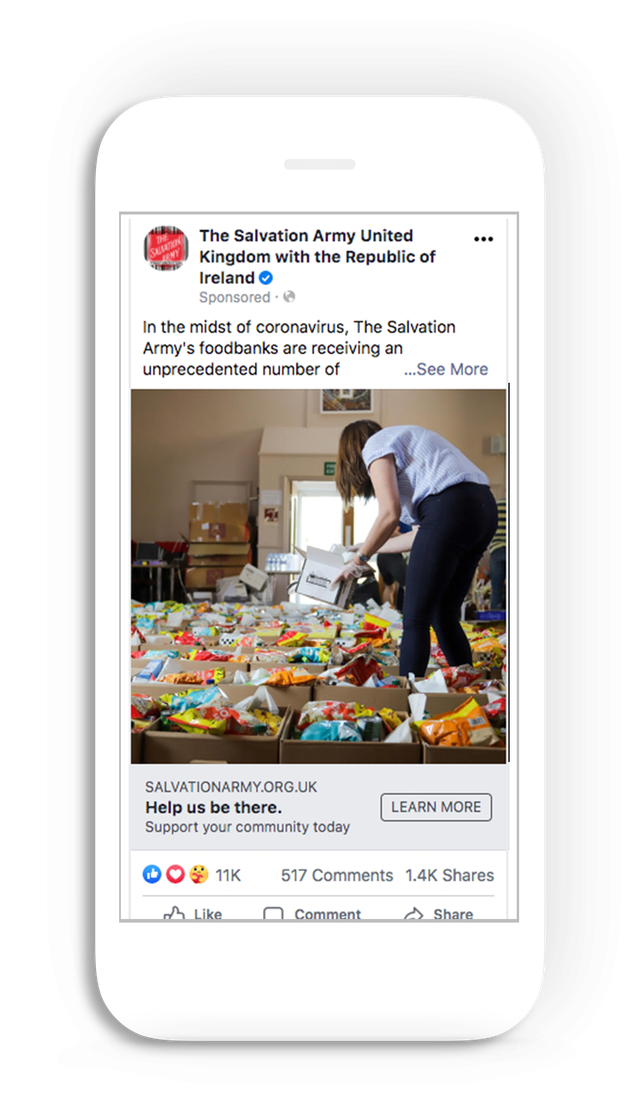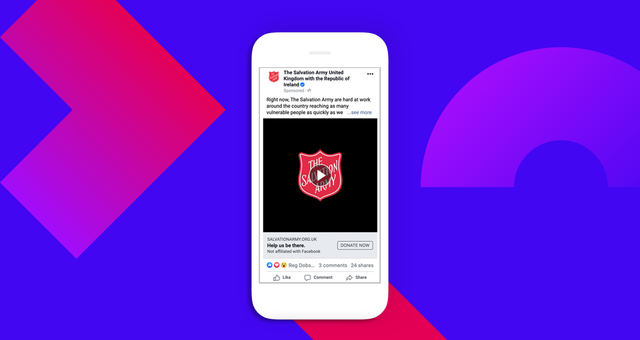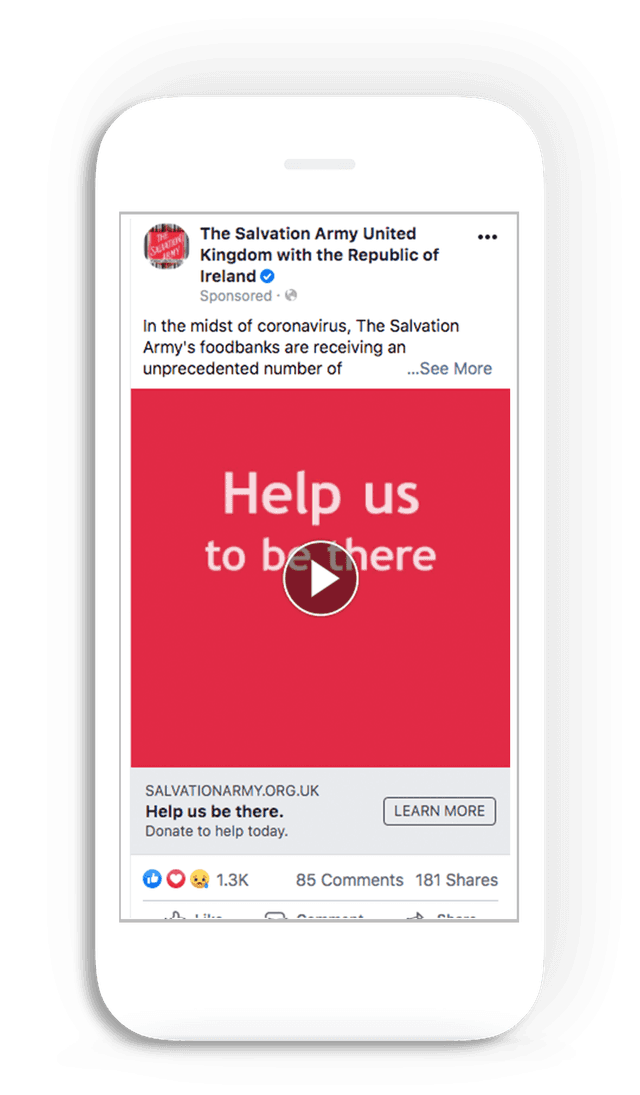The Salvation Army: Coronavirus response campaign
- Exhibited by
- Gemma Reeve
- Added
- January 07, 2021
- Medium of Communication
- Digital marketing
- Target Audience
- Individual donors
- Type of Charity
- Community and social services
- Country of Origin
- UK
- Date of first appearance
- 27th March 2020
SOFII’s view
This is a perfect example of how to run a flexible and multi-channel campaign during a time of crisis. Working across online platforms, The Salvation Army were able to reach a large number of potential donors whilst also tailoring the campaign to react to the ever-shifting context of life in a pandemic. Above all, this allowed the Salvation Army to provide vital care for beneficiaries at a time when government policies were falling woefully short.
Summary / objectives
Spanning over three months, from 27 March until 21 June, The Salvation Army ran a multi-channel campaign which included pivoting their digital marketing with Manifesto to drive donations to support their coronavirus impact food programme.
Due to the pandemic, the team at Manifesto were unable to accurately forecast, budget or draw a timeline beyond the present, meaning returning to the strategic drawing board.
However, the vision was simple: to create an entirely new campaign shape which could move in tandem with the changing pandemic environment. That meant a strategy which was flexible, dynamic and reactive.
Creator / originator
Manifesto
Background
Coronavirus has had a financially devastating effect the livelihoods of people in the UK living on the poverty line. The Salvation Army, a Christian church and registered charity, has been a core support to the hardest hit, distributing food through their networks, and supporting homeless people living at their residential centres.
Whilst the UK government did rush homeless people into empty hotels at the beginning of the country’s lockdown in March, provisions as basic as food were not realised. As such there was an emerging and rapidly growing need to support food banks.
According to The Salvation Army’s UK Food Distribution Survey, during February and April 2020 they recorded a 63 per cent surge in households given food support.
Influence / impact
Whilst ultimately increasing donations for The Salvation Army through an increased awareness of their frontline work, the Manifesto team wanted to achieve three key things though this newly built strategy. One was to build education around how the virus directly impacts the homeless and foodbank-heavy spaces. Secondly, they wanted to deliver frictionless donor journeys which maximise return on advertising spend (ROAS). Finally, the team were keen to recruit a good volume of donors from a varied pool of both warm and cold leads.
Special characteristics
Using Bing, Facebook, Google Grants and Google Paid, Manifesto designed a campaign which took a more agile approach to performance.
The campaign strategy was heavily led by data. The team implemented Facebook Rules which – based on daily performance – would incrementally increase ad spend by about 5 per cent each day, as long as the campaign was making a profit. This automation meant performance could quite literally dictate spending.
Throughout the three months, Manifesto used Google Trend data, and valuable insights from The Salvation Army’s work on the ground, to help pivot messaging alongside the changing public mood during lockdown. Whilst March-April saw the most donations, driven largely by a sense of urgency created by lockdown, May-June saw this slow-down which required the strategy to adapt.
As expected, the first month made up the bulk of the campaign’s total revenue. By incorporating behavioural economics theory in the latter two months, Manifesto managed to keep donation momentum. Giving a donation range in the ad copy increased donation value, and hard-hitting messages performed best as the lockdown relaxed and eased people’s sense of urgency.
Despite an unrelenting increase in the ongoing support required from The Salvation Army, from 10 May – when the government announced its lifting of lockdown strategy – Manifesto could see a lull approaching in donations. To curb this, Manifesto changed some of the ad messaging to convey relevant, hard-hitting stories. Throughout the entirety of the campaign, the strategy pivoted about five times.
When it was time to wind down the campaign, the team used a similar rule-based strategy to the one implemented at the beginning. If ROAS dipped below 300 per cent, the ad spend would decrease by 10 per cent on that day. This meant the charity’s campaign was data-led from start to finish.
Results
Over the three months, the campaign maintained a 731 per cent ROAS for The Salvation Army, bringing in over £1m in revenue. That means that for every £1 which went into the vitally needed campaign, £7.31 came back to the charity. It also generated the charity 20 million impressions across the four channels the campaign rested on. In all, the campaign attracted 13,790 donors, approximately, 6,870 of which were cold.
Throughout this campaign, The Salvation Army never fell into a negative ROAS, setting a strong precedent for future crisis-focused campaigns.
The campaign has since been shortlisted as a finalist in the Third Sector Awards 2020
Merits
During a time where the not-for-profit sector fundraising saw dialogue channels close down, physical events be cancelled or postponed, retail shops close, out of home audiences diminish, and regional volunteering put on pause, data and rule-based strategy lead the way and provided incredible results during what was otherwise a very uncertain time.
 View original image
View original image
 View original image
View original image
 View original image
View original image
Also in Categories
-
- Digital fundraising
















